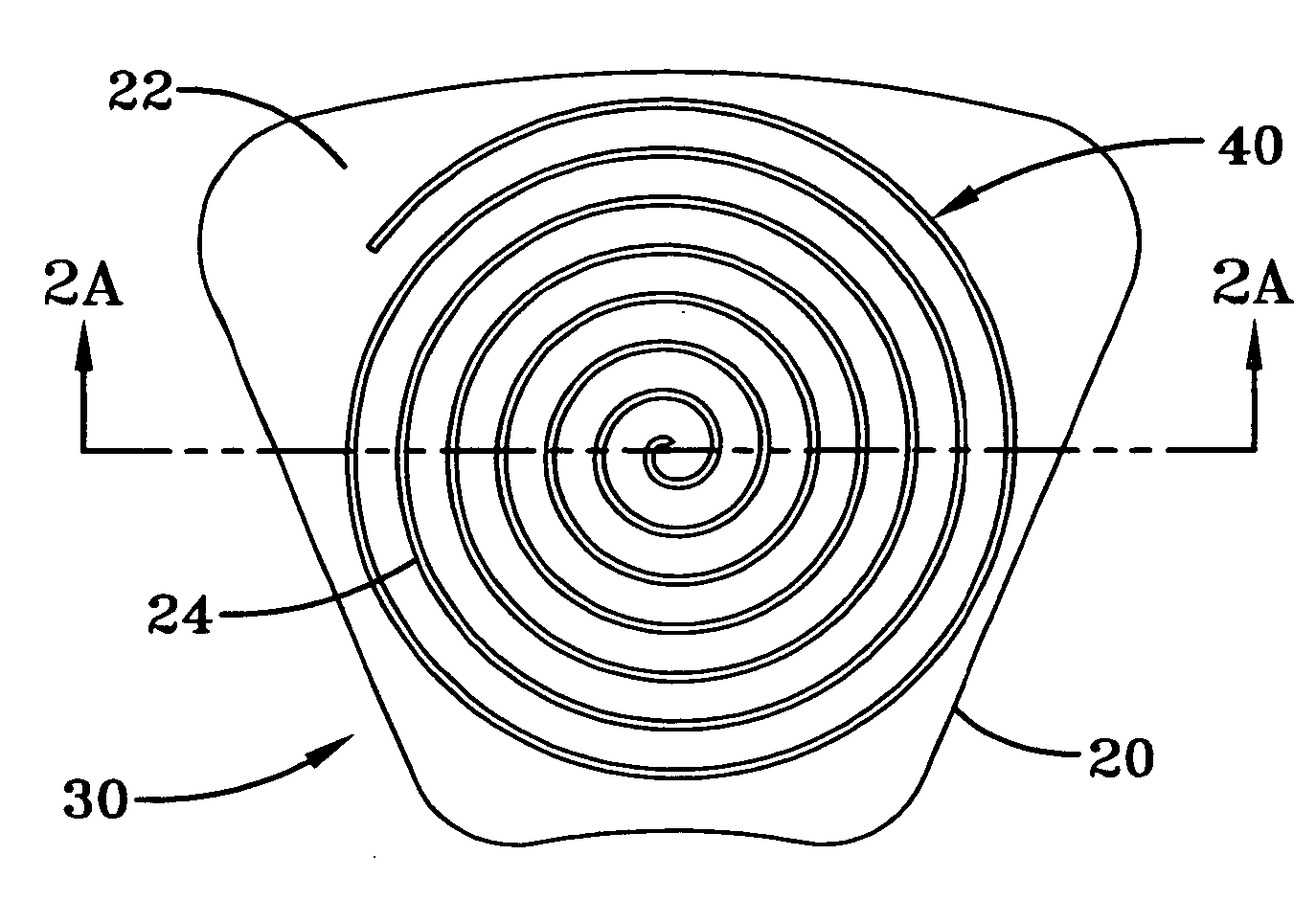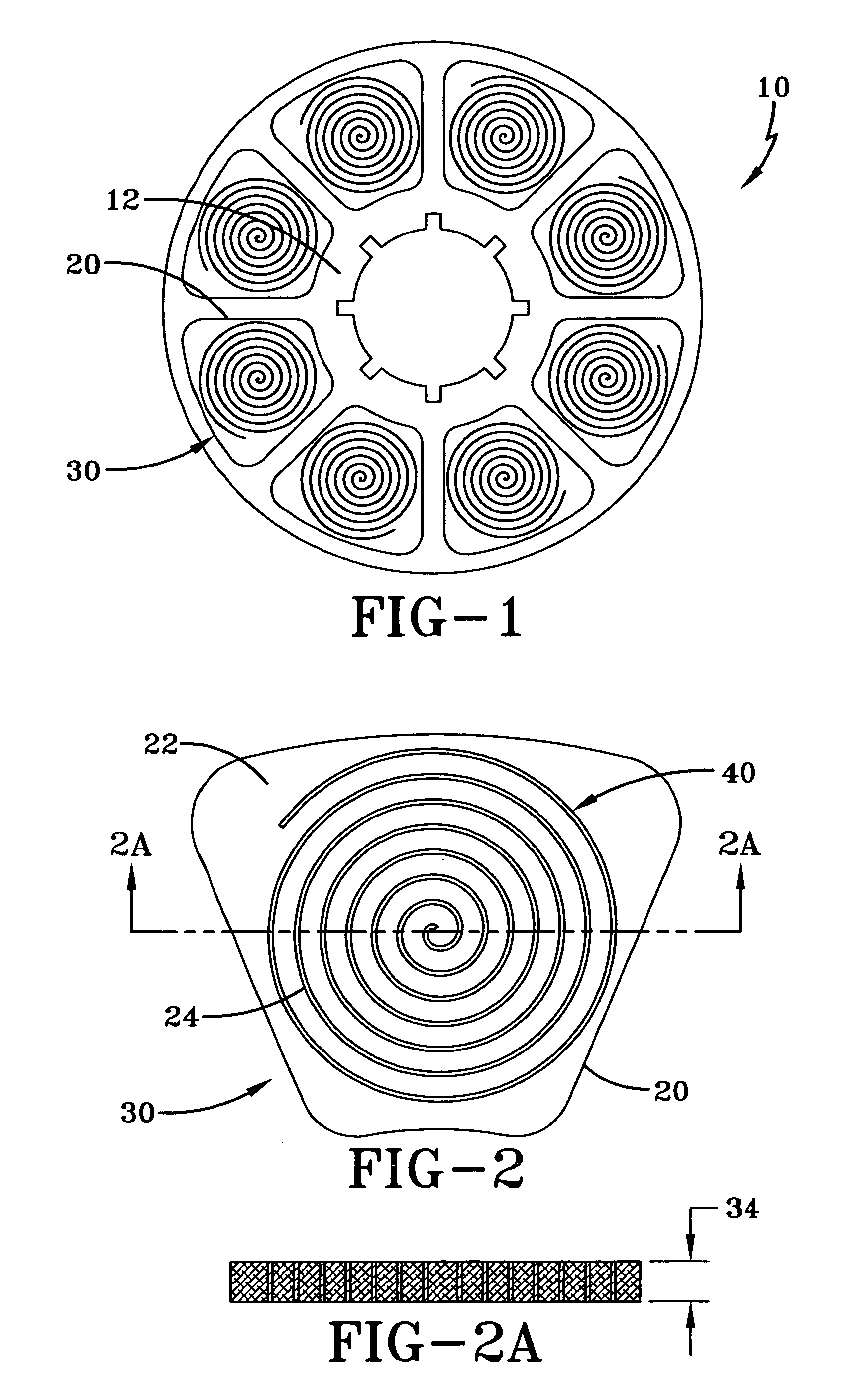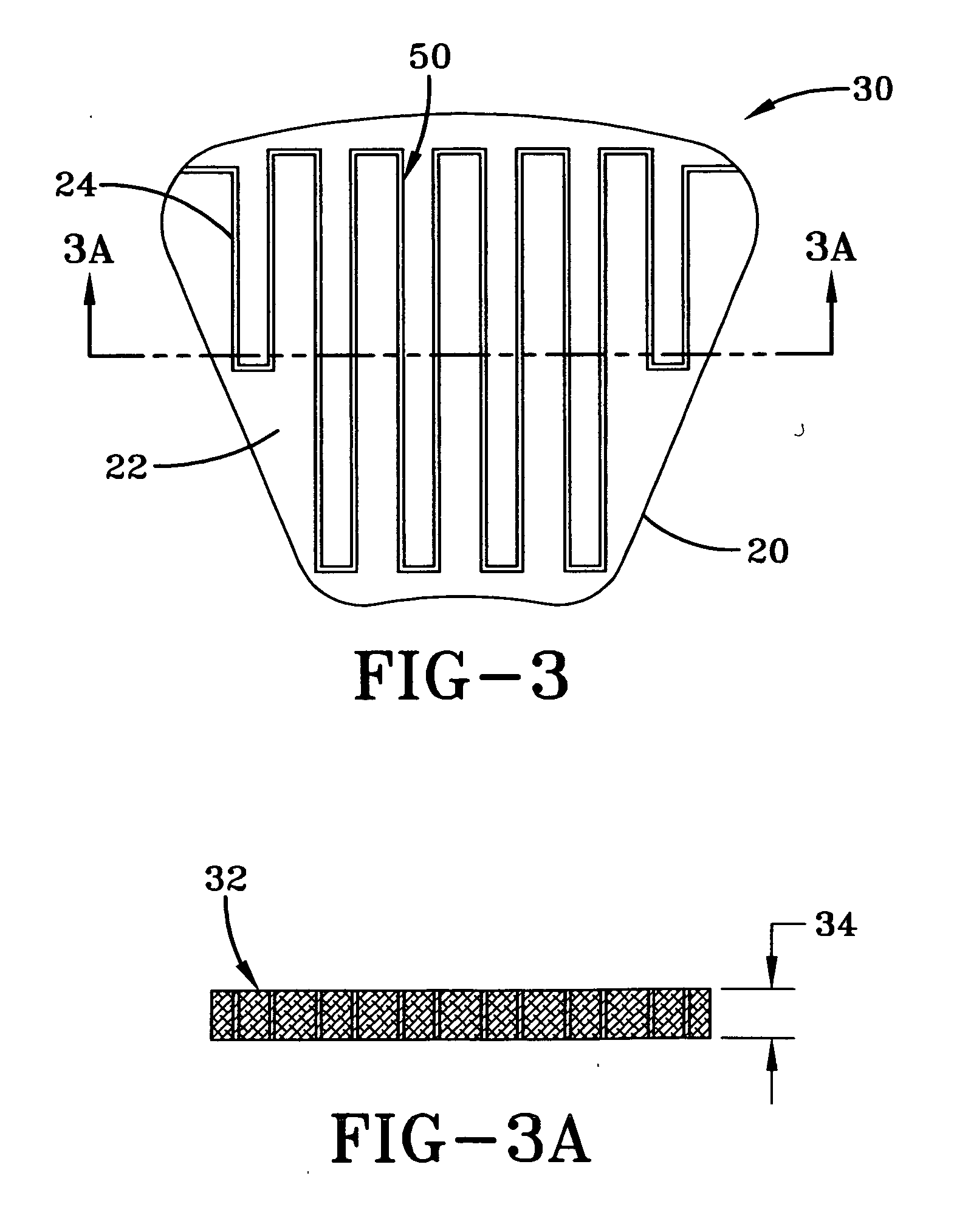Reinforced brake lining and method of producing
a brake lining and reinforced technology, applied in the field of brake systems, can solve the problems of increased wear, heat dissipation, difficult and expensive grid manufacturing, etc., and achieve the effect of increasing wear characteristics
- Summary
- Abstract
- Description
- Claims
- Application Information
AI Technical Summary
Benefits of technology
Problems solved by technology
Method used
Image
Examples
Embodiment Construction
[0015] Various aspects of the invention are presented in FIGS. 1-6 which are not drawn to scale and in which like components are numbered alike. Referring now to FIGS. 1-3, according to an aspect of the invention, a brake disk 10 has an annular disc 12, and a plurality of segmented brake lining cups 20 secured to the disc 10. These lining cups 20 are filled with brake lining material 22, forming a brake lining assembly 30. The brake lining assembly 30 has a wear surface 32. This is a fairly standard brake disk construction. The present invention improves this construction by reinforcing the brake lining material 22 with a metallic winding structure 24.
[0016] Prior art has reinforced the brake lining with grids, or honeycomb structures. These methods require assembly and bonding technologies to fasten the individual pieces together. Bond techniques for metallic reinforcements typically include brazing or welding. As a result, there is an overlap of material at the bond interface. Th...
PUM
| Property | Measurement | Unit |
|---|---|---|
| width | aaaaa | aaaaa |
| thermal conductivity | aaaaa | aaaaa |
| metallic | aaaaa | aaaaa |
Abstract
Description
Claims
Application Information
 Login to View More
Login to View More - R&D
- Intellectual Property
- Life Sciences
- Materials
- Tech Scout
- Unparalleled Data Quality
- Higher Quality Content
- 60% Fewer Hallucinations
Browse by: Latest US Patents, China's latest patents, Technical Efficacy Thesaurus, Application Domain, Technology Topic, Popular Technical Reports.
© 2025 PatSnap. All rights reserved.Legal|Privacy policy|Modern Slavery Act Transparency Statement|Sitemap|About US| Contact US: help@patsnap.com



